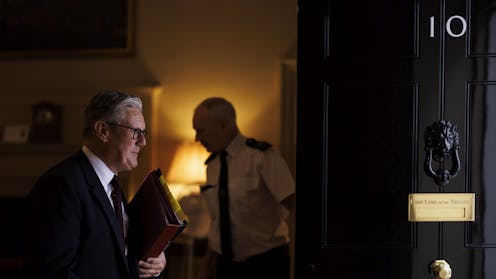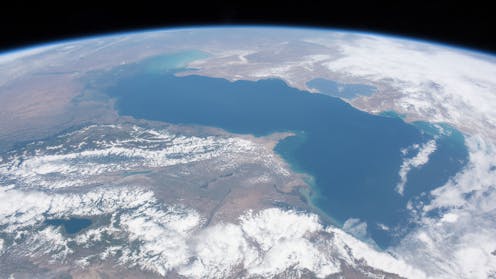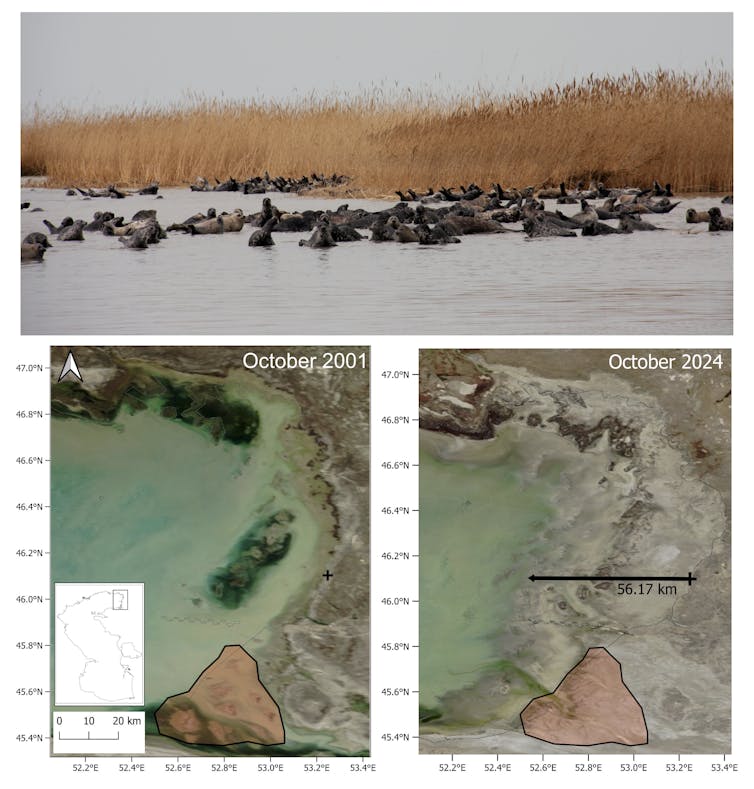Source: The Conversation – UK – By Ayoush Lazikani, Lecturer in Medieval English, University of Oxford

British Library Catalogue of Illuminated Manuscripts
Each night, the Moon glistens in the night sky, replete with all sorts of meanings depending on the person viewing it. Poets and artists have contemplated it for thousands of years.
The Moon meant a great deal to medieval people around the world. It was believed to have an enormous impact on Earth, affecting the tides, the trees, animals and human minds and bodies. But it also had many symbolic associations, whether in the realms of love, illusion or religion – as I explore in my new book, The Medieval Moon: A History of Haunting and Blessing.
In fact, I suggest we can talk about medieval moons in the plural, because the Moon was seen in such a wide variety of contexts and guises. The book travels across multiple regions and cultures to seek these medieval moons, taking in Arabic, Chinese, English, French, German, Indian, Italian, Japanese, Korean, Latin, Mayan, Norse, Persian, Polynesian and Welsh traditions, among others.
I use “medieval” as a shorthand for the years AD700AD to AD1600 around the world, but the term is an imperfect one developed to describe European history – so should be applied to other regions and cultures with care. What constitutes a medieval period varies from language to language and from culture to culture.

Wiki Commons
In many ways, the Moon was like a riddle for medieval people. As a symbol, it did not have an easily decipherable meaning, which encouraged viewers to read it in playful ways. Consequently, many Old English and Old Norse riddles appropriately have the solution “Moon”.
The Moon was also seen as place of travel and adventure. Japanese, Italian, English, German and Dutch sources all testify to stories of travel to and from the Moon, long before the age of real space travel.
The Moon was also involved in many kinds of prophetic activity. In the literature of the period, sorcerers and kings studied the Moon to find out about the future. The legendary sorcerer Merlin, for example, made prophecies involving the Moon in Geoffrey of Monmouth’s History of the Kings of Britain (circa 1155)
The Moon was also a rich symbol in religious contexts. In medieval Christian and Islamic sources, the Moon could represent everything from the Islamic Prophet Muhammad to the Christian Church as an institution.

John Rylands Research Institute and Library
The Moon was also involved in all kinds of prognoses and regimes related to ill-health and healing. It was believed by people like Geoffrey of Meaux, a French author and scientist (active 1310-1348), that a lunar eclipse in Libra, alongside a conjunction of Mars, Jupiter and Saturn in the sign Aquarius, was the cause of the terrible pandemic known as the Black Death.
Medieval people frequently consulted “moonbooks” – manuscripts that offered guidance about what to do depending on the position of the Moon – to find out about the prognosis of various illnesses, as well as ascertaining the right time to undertake healing practices like bloodletting or surgery.
Despite its perceived usefulness to medicine, the Moon was also associated with inconstancy and illusion. Poets including Geoffrey Chaucer (1343-1400) and Robert Henryson (1460–1500), and authors of stories such as the animal fable Kalīla and Dimna, wrote about the Moon as an illusory force, tricking those human beings who read it incorrectly.
Christian poems and prose such as The English Pearl (a dream vision) and Guide for Anchoresses (a guidebook for religious recluses) also asked readers to think about the Moon as a marker of changeability, mirroring life in the Earth below it.
Read more:
Three medieval tales about adventures to the Moon from around the world
Despite this freight of negative meanings, the Moon was also associated with love. Medieval Sufis – commonly known as Islamic mystics – wrote of “moon beauties”. For these poets, the moon beauty was not an earthly lover but the divine – Allah. Poets like Aṭṭār of Nishapur, Jalāl al-Dīn Muhammad Rūmī, Abu Ḥasan al-Shushtarī and Muḥyiddin Ibn ‘Arabī imagined the divine as the ultimate “moon beauty”.
As it shimmered for medieval audiences, the Moon grasped at deep emotions and complex thoughts, pervading people’s lives in moments of harshness and moments of tenderness.
Looking for something good? Cut through the noise with a carefully curated selection of the latest releases, live events and exhibitions, straight to your inbox every fortnight, on Fridays. Sign up here.
![]()
Ayoush Lazikani does not work for, consult, own shares in or receive funding from any company or organisation that would benefit from this article, and has disclosed no relevant affiliations beyond their academic appointment.
– ref. For medieval people, the Moon was both a riddle and a blessing – https://theconversation.com/for-medieval-people-the-moon-was-both-a-riddle-and-a-blessing-261795














